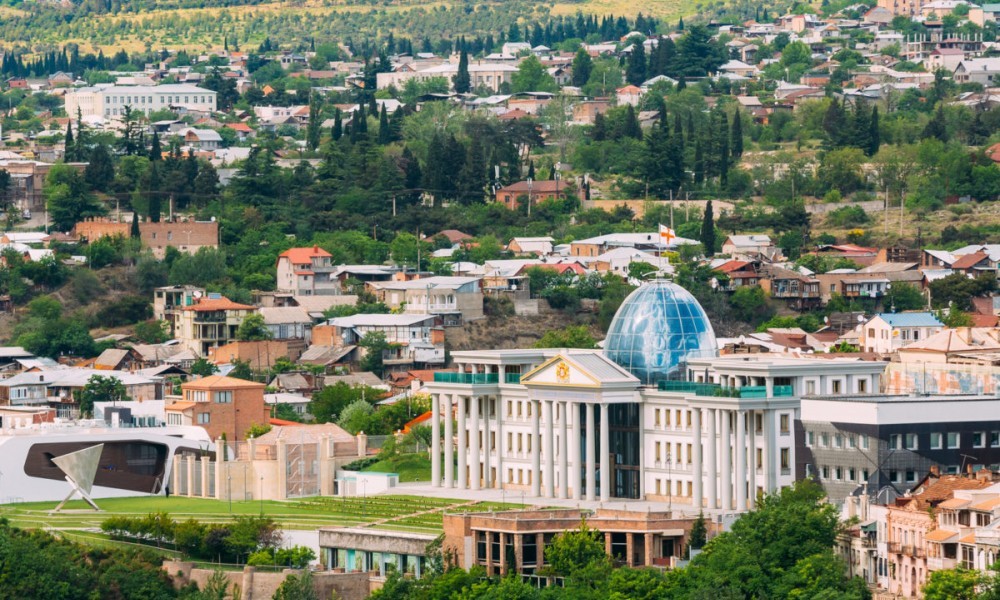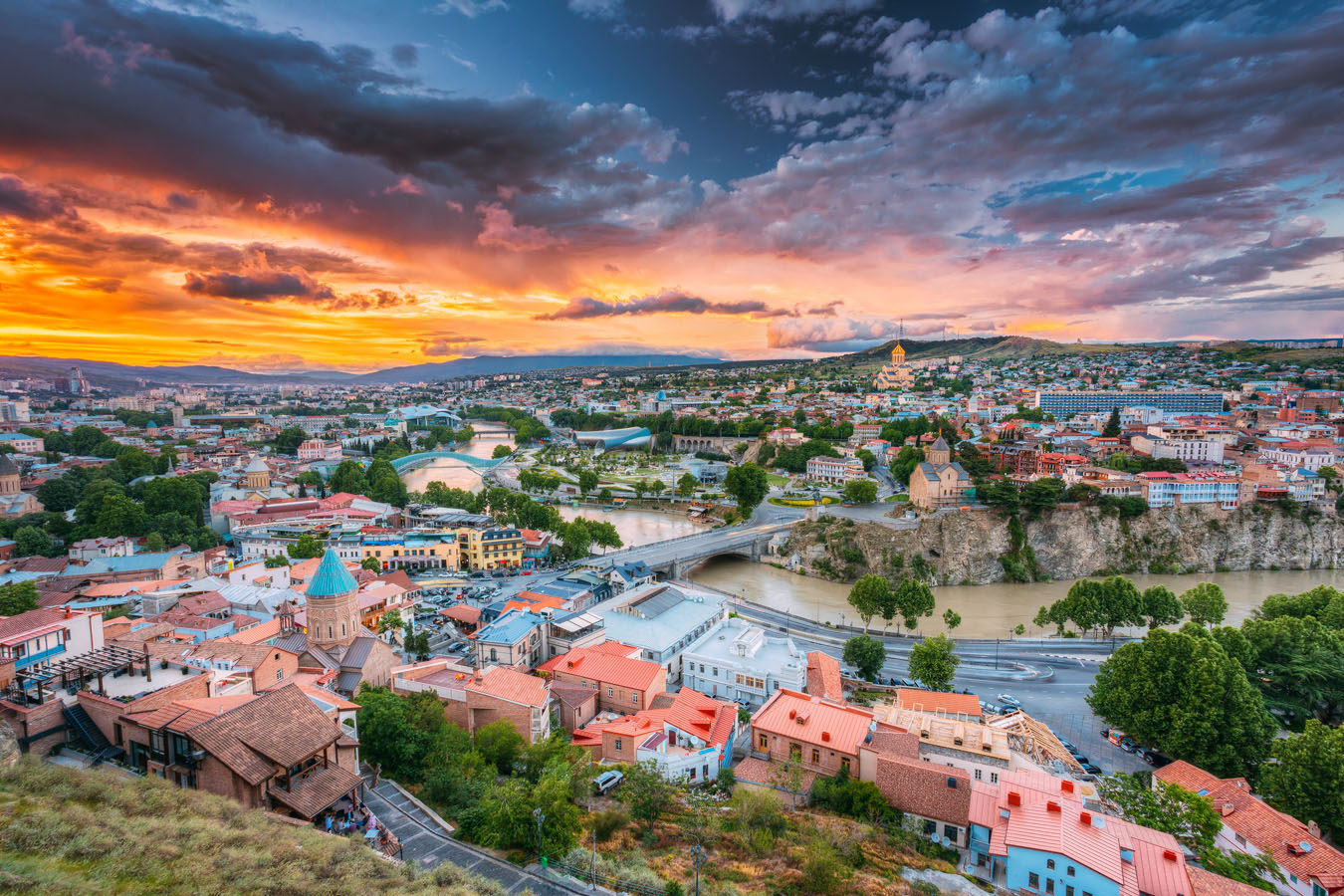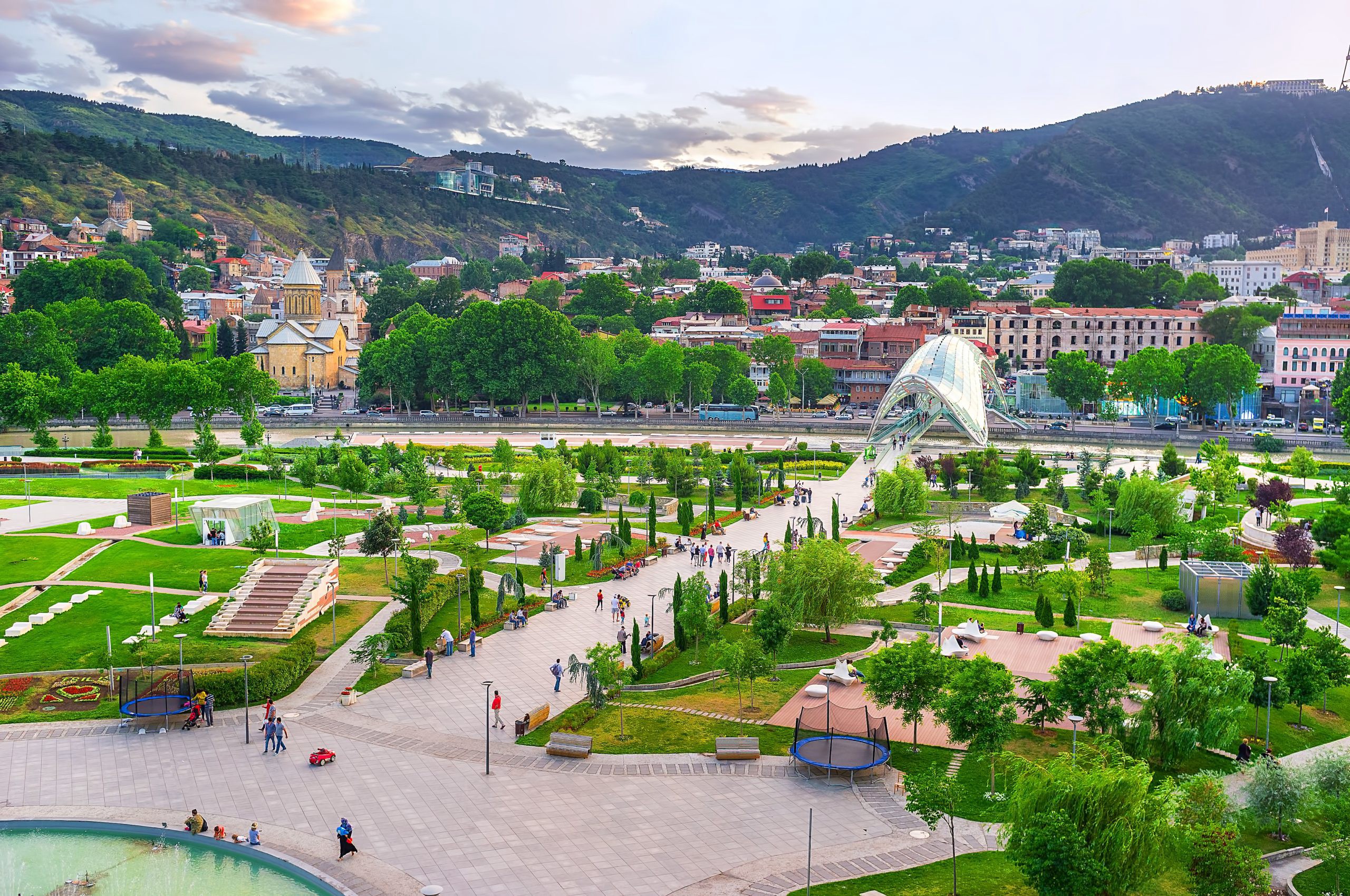World ghettos. Armenian Soul in the Heart of Tbilisi

Armenians in the City
Some Armenian historians believe that development of Tbilisi began with Avlabari district, alleging that it was there where the city's first stone was laid. Their Georgian opponents argue vehemently that there is no way it is possible because even the name of the locality translates as "district outside city walls". Each party constantly presents piles of facts proving them, not somebody else, right, but is seems that the truth is, as usually, somewhere in between.
It is better not to interfere with the argument of these two hot-tempered peoples and concentrate on real facts instead. It is hard to believe today, but as late as in 19th century it were Arnenians who constituted 60% of Tiflis's population. They resided as nearly as everywhere and fell in love with the city so deeply that began to think of it as of their hometown: they erected own churches - there were as much as 28 of them and laid roads, turning it into a metropolis of Caucasus. However gradualy natives of "sunny Yerevan" left for home, assimilated or simply moved closer to their kind to Avlabari, the place that simply cannot be ignored while visiting Georgia. Photo aviontourism.com
Photo aviontourism.com
It is accesible both on foot across Metekhi Bridge from the side of the Old Town and by subway till the namesake station. Its modern look is what little is left of things that make old Armenian ghetto akin with new Georgian architechture, with all its transparency, sophisticated shapes and incredible amount of glass. View that meets the eye on the surface makes one believe in the existence of time machine becuase time sure has stopped here, but let's make one step at a time.
Neighborhood at Its Finest
Almost every walk begins at Avlabari Square where a monument to characters of legendary soviet movie "Mimino" awaits tourists, the movie, where, alongside other things, complicated relations between Armenians and Georgians are addressed. Love and hate are just one step apart - or in their case, one glass of fine Caucasian wine, although they don't drink it from glasses - more like from jugs. Nowadays the square isn't that intresting, but history-wise it is an important place - the road to legendary Kakheti Province used to begin there; Kakheti Gate reminds about it now.
Read also: Postcards from Tbilisi
Ketevan Tsamebulis Avenue is the district's main transport artery. Tiny streets and boulevards ramble from it in every direction. You can pick any of them for a promenade; beccause of their design being vey chaotic you will most likely get lost and will have to walk around the whole neighborhood anyway, going through backstreets, passages and taking awesome staircases. To put it short, navigation at Avlabari is poor but it surely isn't the ghetto's downside, it's more like a distinctive so you shouldn't even try to follow your own route - you better ask locals a way to a certain landmark. Photo pinterest.com
Photo pinterest.com
Not only will they tell but probably also take you to a necessary object. Both Georgians and Armenians blow your socks off with their sociability. Having figured out that you had come, say, from Ukraine, they will definitely start shouting something like "Hey, Kovalenko, your Urkainians are here!" until a neighbor, your fellow countryman, looks out from a balcony. It is highly probable that acquaintance will continue in one of numerous Khinkali Bars or at least over a glas of wine or chacha right there in the yard.
Houses and buildings of Avlabari are centuries-old, indeed. It seems like they are going to fall down any moment but experience has proven that they'll survive us all. Proud local citizens are dead set against reconstruction of the neighborhood and turning it into a modern residential area. Situated kind of between the heart and suburbs of Tbilisi, it still looks like neither high-altitude dormitory districts, nor renovated and lighted city center.
Nevertheless, in this half-destroyed entourage there are iconic constructions that have a history behind them. For instance, a building of the legendary clandestine publishing facility of Avlabari where anti-imperial brochures, newspapers and books were printed in early 20th century. It can be said that this place is the origin of revolutionary movement in Caucasus. Khojivank Pantheon, where remains of famous Armenian writers and intellectuals rest, is considered equally important. It is an artistic Mecca of the distric of a kind - people keep bringing flowers to tombs of Armenian poets and writers Hovhannes Tumanyan and Raffi. Photo mirvokrugnas.com
Photo mirvokrugnas.com
Among touristic objects major one is, no doubt, Metekhi Cathedral built as early as in 12th century. Many ordeals fell to its lot, from distruction by the Mongolians to liquidation by order of fellow countryman Lavrentiy Beria. However both Georgians and Armenians always managed to find resources for its reconstruction. It may not resemble its former self right now but merely the fact of preservation of the complex is wonderful, even more so with a geat viewing platform being added as a bonus.
Read also: If you have 10 dollars and you are in Yerevan
Legendary Avlabari Bazaar, heard of far outside the city, doesn't look that impressive nowadays - after all, it is hard to stand up to pressure of shops and megastores even in Georgia, where everyone likes to trade and bargain. Still situated at Hamlet Gonashvili Street, it opposes "civilization" with all its might and keeps making locals happy with its products - fish, in particular.
It may seem at the first sight that the district is in a very sorrowful state and that nothing but depression reigns there. But in reality it isn't like that. Armenians and local Georgians are very traditional people. They are accustomed to living there, among wrecks and remains of great temples, where as late as some ten years ago water and electricity were available only in certain hours. There is no doubt that in some time Avlabari will become no worse than the Old Town and tourists will be coming there looking for beauty and coziness instead of zest. It's just both the distric and its dwellers need time for that and it flows in the way of its own there.
Cover photo globaldutchie.com





















